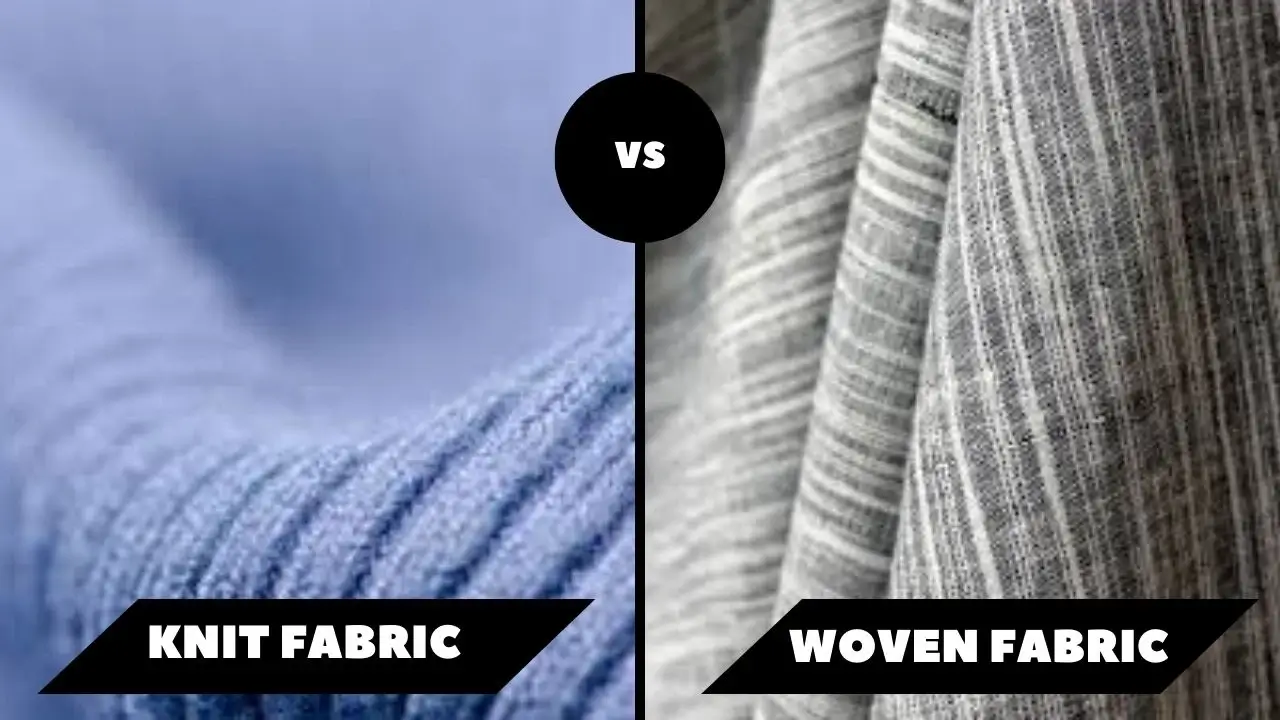Whether you’re a home sewer or a fashion designer, understanding the difference between knit and woven fabric is essential to creating garments that look great and last. Both fabrics are made from yarns, but the weaving process used to create each type of fabric is distinctly different. Let’s take a closer look at knit vs woven fabric and how these two fabric types differ.
Knitted Fabrics
Interloping yarns typically make knitted fabrics in a series of loops – hence the name “knit“. These fabrics have an elastic quality that allows them to stretch easily in all directions, making them comfortable to wear and care for. Knitted fabrics are usually lightweight and breathable, making them ideal for summer clothing.
However, they are also prone to snagging since their fibers can quickly become unraveled or pulled apart. This makes knitted fabrics unsuitable for heavy-duty items like upholstery or carpets.
Woven Fabrics
In contrast to knits, woven fabrics are created by interlacing two sets of yarns at right angles. Unlike knits, woven fabrics have no given meaning they don’t stretch in any direction. So they must be cut with enough room for movement when worn. Woven fabrics tend to be heavier than knits due to their stiffer construction, which also makes them less prone to snagging or tearing than knits. They are often used as upholstery fabrics or in items like carpets and rugs because of their durability and strength.
Also Read: Knit vs Woven Boxers: Which is Better
When To Choose a Woven Fabric Over a Knit Fabric
| Criteria for Choosing Woven Fabric | Criteria for Choosing Knit Fabric |
|---|---|
| Fabric Structure | Fabric Structure |
| – Woven fabrics are constructed by interlacing two sets of yarns at right angles, creating a stable and structured material. | – Knit fabrics are made by interlooping a single yarn, resulting in a more flexible and stretchy fabric. |
| – Suitable for structured garments like tailored suits, dresses, and button-up shirts. | – Ideal for garments that require stretch and comfort, such as activewear, sweaters, and t-shirts. |
| Durability | Comfort and Fit |
| – Woven fabrics tend to be more durable and resistant to wear and tear due to their tightly interlaced yarns. | – Knit fabrics offer better comfort and ease of movement due to their stretchiness. |
| – Recommended for items that will undergo frequent use and washing, like work uniforms and upholstery. | – Great for fitted garments that require a snug fit and flexibility, like sportswear and leggings. |
| Breathability | Breathability |
| – Woven fabrics often have a more open structure, allowing for better air circulation and breathability. | – Knit fabrics can have a more closed structure, leading to potential heat retention. However, certain knit patterns can enhance breathability. |
| – Suitable for warm weather garments and items worn in humid conditions. | – Preferred for cooler weather garments and layering pieces. |
| Appearance | Appearance |
| – Woven fabrics offer a crisp and polished appearance with distinct patterns, making them suitable for formal attire. | – Knit fabrics can have a more casual and relaxed appearance, making them suitable for everyday wear. |
| – Often used for business wear, dress shirts, and structured dresses. | – Commonly used for casual tops, loungewear, and accessories. |
| Tailoring and Structure | Stretch and Movement |
| – Woven fabrics can hold intricate tailoring details, pleats, and folds more effectively. | – Knit fabrics excel in garments where stretch, movement, and contouring are required. |
| – Recommended for garments that require precise shaping, like blazers, trousers, and skirts. | – Preferred for active wear, sportswear, and items that need to accommodate body movements. |
| Ease of Sewing | Ease of Sewing |
| – Woven fabrics are generally easier to sew due to their stable structure and well-defined grain lines. | – Knit fabrics can be more challenging to sew due to their stretchiness, requiring specialized techniques and equipment. |
| – Suitable for beginners and those learning to sew. | – Requires some sewing experience or familiarity with knit-specific techniques. |
| Maintenance | Maintenance |
| – Woven fabrics tend to resist pilling and stretching, maintaining their original shape over time. | – Knit fabrics can be prone to pilling and may lose shape with prolonged use and washing. |
| – Ideal for garments that will be worn frequently and need to retain their appearance. | – Suitable for garments where comfort and flexibility take precedence over long-term appearance. |
| Examples | Examples |
| – Denim, cotton poplin, tweed, and chiffon are examples of woven fabrics. | – Jersey knit, rib knit, interlock knit, and fleece are examples of knit fabrics. |
| – Often found in formal wear, work attire, and home furnishings. | – Commonly used in activewear, casual wear, and undergarments. |
Conclusion
When it comes down to it, knit vs woven fabric is really a matter of personal preference both have their own unique benefits and drawbacks that make them suitable for different applications. For example, if you’re looking for lightweight pieces that move with your body when worn, the knitted fabric may be your best bet. However, if you need something stronger and more durable for upholstery projects or carpets then woven fabric might be the way to go instead! No matter which type of fabric you choose, understanding the differences between knit and woven materials will help ensure that you get exactly what you need every time.
Also Read: Knitting Vs Purling – The Difference Between these Basic Stitches!
